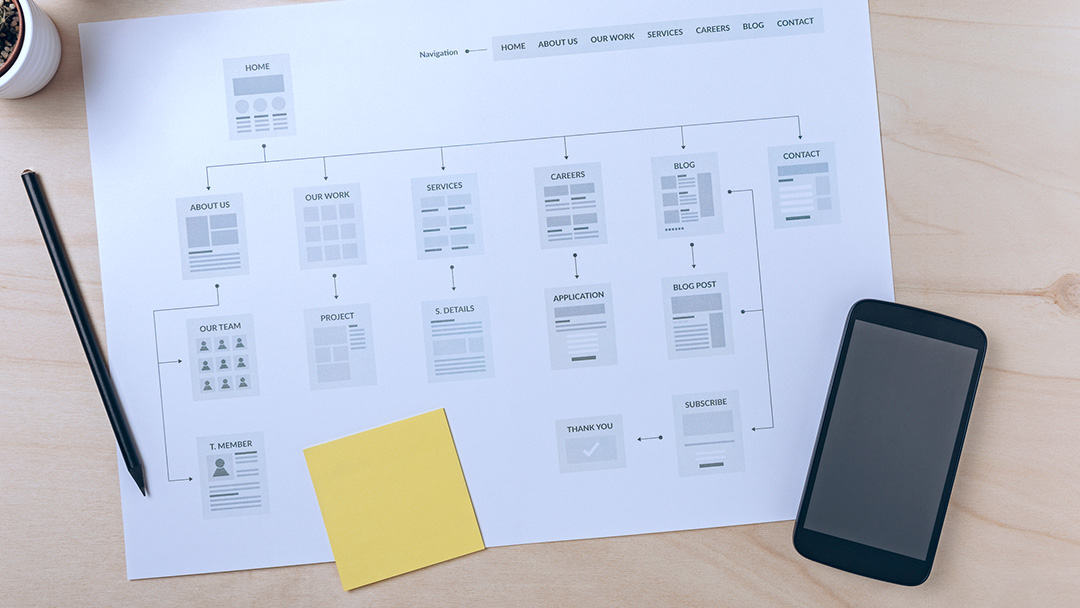
The practice of Content Modeling often gets mentioned alongside articles championing the adoption of headless CMS platforms and the advantages the two create when combined with one another.
Yet, despite the apparent synergy between Content Modeling and a headless CMS, organizations using a traditional CMS can still absolutely benefit from adopting a content modeling approach.
What is Content Modeling?
Understanding the benefits of Content Modeling begins with understanding what a content model is.
“A content model represents the content structure by mapping the content types, their elements, and the relationship among the elements and types. They often are used to help developers and content teams understand requirements for new content management systems and other kinds of content technology.” – Mike Wills, Director of Development BlueModus.
As noted above, breaking down your content into types (blogs, products), elements (title, by-line, featured image, etc.), and relationships allow you to more easily reuse and repurpose content from your content management system (often a Headless CMS) to other content platforms and channels. However, taking a step back -- content models can also benefit those on a Traditional CMS.
(Note: If you’re looking to undertake content modeling at your organization, The Only Way to Guarantee a Perfect Content Model by Mike Wills is an excellent primer on the best way to approach content modeling at your organization).
Benefits of Content Modeling for a Traditional CMS
Understanding your Current Content Inventory
For most organizations, the most significant revelation seen when they first undertake content modeling is examining their content ecosystem at an almost atomic level. Auditing your content is a primary part of content modeling, and this can reveal the strengths and gaps your organization has from a content perspective. Some common lessons from a content inventory can be identifying:
- Broken content (broken images, CTAs, products, or links)
- Redundant content (repetitive articles on the same subject that aren’t additive)
- Contradicting content (articles that contradict or create confusion for users)
- Inconsistent content elements (use of headlines, CTAs, reviews, prices, etc. may be varied)
- Formatting issues (injected formatting from copy/paste, inconsistent styling, etc.)
- Content Type Gaps (subject-matter preferences, weaknesses in content coverage, missing content types you’re targeting)
- Unintentional Content Silos (opportunities for cross-linking content with other relevant content on your site)
- Gaps in your Editorial / Publishing processes (are certain content types more structured than others?)
- Your organizations Information Architecture/content marketing health
While content model audits are designed to define standards for your organizations content by element, types, and relationship, they force you to look at level.
Identifying Content Management Opportunities
A content model can help quickly identify hurdles your organization has in publishing consistent and structured content. For example, suppose your audit reveals that only certain content types follow strict content structures or contain desired elements. In that case, it can be an opportunity to examine what hurdles are preventing certain content types from being published with consistent standards.
A common finding in content models is that your content isn’t easily divided into elements because your traditional CMS requires editors to format these elements manually. That’s where a content model can reveal opportunities for improving your content management process, such as adding structured processes and styles around:
- Headlines
- By-Lines
- Featured Images
- CTAs
- Descriptions (short, long)
- Open Graph elements
- Many more
While a lot depends on the customization options of your traditional CMS, the above can reveal where development resources may be required if your audit finds that consistency in these areas is lacking.
Improves Mobile Usability
A content model can also identify areas where content isn’t optimized for your mobile users based on your CMS’s available options for content editors. For example, identifying content by a common element, type and relationship can reveal specific gaps from a mobile user, such as your content management system having a bias towards:
- A lack of mobile-optimized content elements (mobile optimized headlines, images, CTAs, etc.)
- Using Hi-res Images in mobile views
Revealing that each content type needs mobile options for these items can help improve your mobile SEO and mobile usability.
Easier consumption, targeting, and delivery of content
Even in a Traditional CMS, implementing content modeling has the lasting impact of making the consumption and delivery of your content more efficient. In addition, the actions you take post-audit can help make sure that all of your content meets your desired structural guidelines, easing the difficulty of sharing and consumption of existing content, the publishing of new content, and when needed, the migration of that content to new platforms.
Interested in learning more about getting started with content modeling? Check out our recorded webinar on How to Start Content Modeling.









